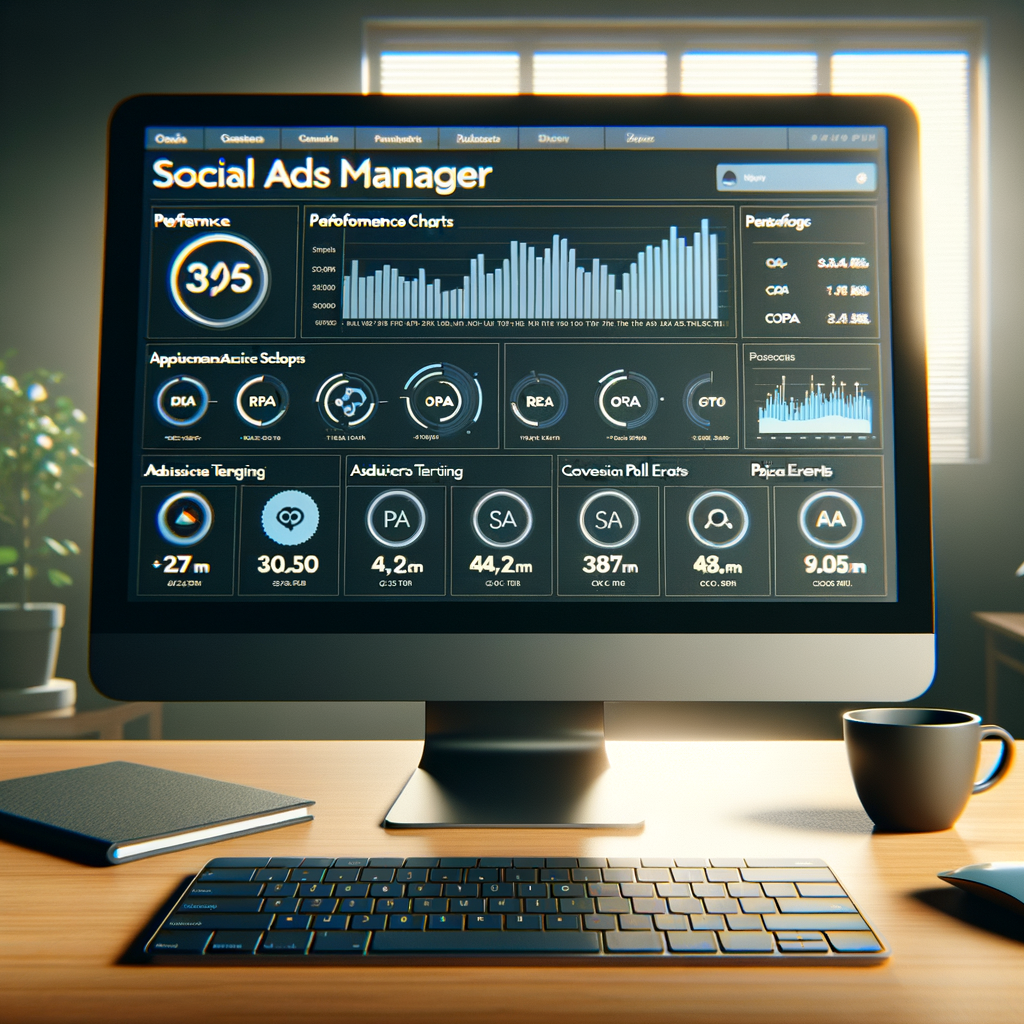7-Day Launch Playbook With A SharePro Social Ads Pro
A buyer-first 7-day hire-to-launch guide showing how a SharePro social ads expert sets targeting, creatives, tracking, and scaling to drive predictable sales.
7-Day Launch Playbook With A SharePro Social Ads Pro
Launching a new product used to feel like rolling dice. Then I hired a social media advertising pro on SharePro Marketplace and built a 7-day launch playbook that turns guesswork into a repeatable system. In this guide, I walk through the exact buyer-focused steps my SharePro expert and I use to map targeting, craft creatives, wire tracking, and scale with discipline. The goal is simple: minimize wasted spend and forecast sales with a level-headed, data-backed approach.
I approach SharePro Marketplace like a performance partner search, not a freelance browse. I read case studies for similar AOVs and industries, check platform specialties across Meta, TikTok, YouTube, and Pinterest, and verify fluency in GA4, UTMs, and conversion APIs. On the discovery call, I ask about their strategy for audience building with first-party data, their creative testing methodology, and their plan to estimate break-even ROAS before a single dollar is spent. The best SharePro pros meet me with frameworks, not hype.
Predictability in a launch is never about guaranteed results; it is about narrowing variance. I start by aligning on unit economics. We confirm product margins, contribution margin after ad spend, average order value, and early repeat purchase assumptions. From those inputs, we compute break-even CAC and set a target MER we can scale against. We write down baselines for CTR, CPM, landing page conversion rate, and add-to-cart rate, then we agree to treat them as hypotheses that will be updated daily. That is how we turn the first week into a controlled experiment rather than a burn run.

Before ads, we do a pre-flight audit that removes ambiguity. My SharePro expert confirms pixels and SDKs are installed, server-side conversion API is connected, consent mode is configured where applicable, and UTMs are standardized across every link. We map purchase, lead, add-to-cart, view content, and custom events in GA4 with clear naming. In the ad platforms, we ensure aggregated event measurement is prioritized correctly, value tracking is enabled, and domains are verified. This is also when we test the thank-you page for revenue passback and validate every event fires once and only once.

Day 1: Alignment, Offer Architecture, And Goals
On day one I turn positioning into an offer that sells. The SharePro pro and I agree on the hero promise, the proof, and the path to buy. We clarify the specific buyer segment we are targeting first, not everyone. If my product is a mid-ticket bundle, we pick an introductory angle and a limited-time incentive that creates urgency without eroding margin. We outline the landing page sections, write a concise headline, build scannable benefit bullets, and place social proof above the fold. We identify a single primary call to action and remove distracting links.
With the offer locked, we document the numbers. We set a daily learning budget that matches data needs, usually 3 to 5 times the target CAC per audience per platform. We establish a soft guardrail for acceptable CAC and a step-down plan if costs exceed thresholds. We also define what success looks like by day three and day seven, so we can make unemotional decisions when numbers start moving.
Day 2: Targeting Blueprint And Data Foundations
Targeting is sharper when it starts close to revenue. We build seed audiences from first-party data: purchasers, high-value customers, engaged email subscribers, and recent site visitors. We create 1 percent and 2 percent lookalikes within the same geo as our launch and exclude existing customers from prospecting.
For interest-based targeting, we move past broad buzzwords and focus on intent clusters. We layer interests that correlate with the specific use case and complement them with behavior signals like engaged shoppers. We document age, gender, devices, and placement considerations, but we resist over-segmentation that starves the algorithm. On TikTok and Meta, we reserve at least one broad audience ad set to let the platform learn, while running hypothesis-driven interest stacks alongside it.
Day 3: Creative Sprint That Reduces CAC, Not Just Looks Good
Creative is the main lever, so we treat it like a sprint. My SharePro pro and I draft a creative brief that includes the audience insight, the problem and solution, the hook promise, and the CTA. We produce a matrix of ad variations using three hook angles, two message bodies, and two calls to action. The hooks cover a fast demo, a strong before and after, and a social proof angle. We script UGC-style videos with real product-in-hand shots, then we capture raw footage and edit to multiple ratios for feed, reels, and stories.
Copy follows a proven structure. We use problem, agitation, solution, proof, and CTA for prospecting, then we switch to objection handling and benefit stacking for retargeting. We keep headlines crisp, surface the offer early, and make the first three seconds count. We assemble a creative tracker with every variant, platform placements, and a hypothesis for why it will win. That tracker becomes our test log for the week.
Day 4: Tracking Confidence And Forecast Readiness
Predictable launch outcomes require instrumentation that shows where money leaks. We validate all UTMs with a standard scheme for source, medium, campaign, ad set, and creative so we can pivot by creative concept and not get lost in naming chaos. We test server-side events against browser events to ensure deduplication is working. We connect the ad platforms to GA4 and build a dashboard that displays MER, ROAS, blended CAC, and contribution margin, not just in-platform metrics.
With tracking in place, we prepare a simple forecast doc. We set an expected CPM range by platform, outline click-through hypotheses by creative family, and map conversion rate goals by landing page variant. We define breakpoints for decisions, such as pausing a creative if it underperforms the median CTR by a certain percentage after a minimum number of impressions, or reallocating budget if CPC shows strong intent but the landing page lags. This turns the launch from intuition into a system.
Day 5: Campaign Build With Efficiency In Mind
The build favors simplicity so the algorithm can learn. In Meta, we choose the Sales objective with value optimization if revenue tracking is robust. We start with ad set budget optimization to ensure each audience gets clean data, and we plan to graduate to campaign budget optimization once early winners emerge. In TikTok, we select the Website Conversions objective with an add-to-cart or purchase event and enable placements that match our creative style.
We place three to five ad sets at launch: one broad, one or two lookalike sets seeded with purchasers or engaged subscribers, and one or two interest stacks. Each ad set gets a sensible budget so we can hit the learn threshold within a day or two. We load three to five distinct creatives per ad set, not small tweaks. We exclude past purchasers and protect remarketing audiences for a separate campaign.
Retargeting is built as its own line with short and mid-funnel windows. We set a 3 to 7 day cart and product viewers audience with more aggressive offers and a 14 to 30 day engager audience that reintroduces value and social proof. We cap frequency to avoid fatigue and prepare fresh variants that rotate automatically.
Day 6: Launch Day Operations And Rapid Learning
At launch, my SharePro pro and I monitor data windows with discipline. We do not judge performance in the first few hours, but we watch for anomalies like broken links, disapproved ads, or extremely high CPMs. Once each ad crosses a modest impression threshold, we check CTR and thumb-stop rate to identify early creative leaders. We resist the urge to make frequent edits that reset learning and instead document patterns.
A midday review focuses on the funnel. If CTR is healthy but CPC is spiking, we consider tightening placements or refreshing the first three seconds of the video. If CPC is fine but landing page conversion is lagging, we shift to an alternate hero section or simplify the checkout steps. If remarketing is soaking up spend with limited incremental revenue, we reduce its budget and push more into the best prospecting ad set to maintain new customer growth.
I use lightweight rules to protect efficiency without over-automation. We set alerts if cost per add-to-cart or cost per purchase crosses a guardrail after a minimum spend. We schedule a single evening budget reallocation toward the top two performers rather than making hourly changes. All changes are logged in the test tracker, so learnings compound.
Day 7: Scale, Stabilize, And Document Predictability
With 48 to 72 hours of directional data, we scale what is working and cut what is not. We nudge budgets up on winning ad sets by conservative increments to avoid instability, and we duplicate the top creative into the broad audience for additional reach. If a lookalike outperforms interests, we create new lookalike tiers and test 3 percent and 5 percent sizes. If a specific placement is outperforming, we give it more room in a dedicated ad set with tailored creatives.
We also capture the early playbook. We document the creative that hit the best CTR and the message that reduced CPC. We note the landing page elements that lifted conversion rate. We take the top hook and produce new iterations that keep the opening promise but switch visuals or voiceover. This creates a creative engine we can run every week.
By the end of day seven, predictability looks like this: a stable MER within our planned range, a CAC that is within a narrow band of our target, and a set of creative and audience principles we can reference on the next product. We still expect normal day-to-day swings, but our system narrows variance and gives us repeatable levers to pull.
The SharePro Advantage In Real Terms
What I get from a SharePro Marketplace hire is not just ad setup; I get platform nuance and decision-making speed. They know when to choose value optimization vs lowest cost, how to structure ad sets to gather clean learnings, and when to let the algorithm breathe. More importantly, they partner on creative and landing page alignment instead of blaming one part of the funnel when results wobble.
Billing is transparent and tied to outcomes. I prefer a flat project fee for the first week with clear deliverables: tracking audit, creative matrix, campaign build, daily monitoring, and a post-launch report with next steps. After that, I move to a retainer or performance hybrid that incentivizes profitable scaling, not just spend growth.
Offer, Funnel, And Creative: The Three Levers I Control
A paid launch fails when one lever drags. If the offer is noisy, we simplify it. If the funnel is slow, we improve load speed, compress images, and streamline checkout. If the creative is bland, we reshoot with stronger hooks, clearer demos, and authentic UGC. I do not expect ads to fix a weak offer, but I do use ads to expose which lever needs work. That mindset keeps the team focused on the right fix quickly.
Minimizing Wasted Spend Without Starving Learnings
Waste reduction does not mean penny-pinching. I fund initial learning so the algorithm can find buyers, but I cut non-performers decisively. I consolidate budget into fewer, stronger ad sets when spend is fragmented. I pause creative that underperforms the median by a meaningful margin after it has enough impressions to be judged. I also protect remarketing from over-serving by setting frequency caps and rotating creatives on a schedule.
Most importantly, I avoid constant tinkering. Frequent edits reset learning and blur cause and effect. Instead, I bundle changes into a daily cadence, record the hypothesis behind each change, and review impact the next day. That rhythm is where predictability is born.
Measurement That Aligns With Cash, Not Just Dashboards
I watch three views of performance. In-platform metrics are directional for creative and audience decisions. GA4 and server-side data give me a blended view across channels. My cash view, usually a simple spreadsheet, shows ad spend, gross revenue, payment fees, cost of goods, and contribution margin. When those three views roughly agree, I trust the scale decision. When they diverge, I reconcile before turning the dial.
I also track early indicators of lifetime value. If new customers from TikTok show higher second-order purchase rates than those from Meta, I adjust CAC targets accordingly. Predictability improves as I incorporate those cohort learnings into my bids and budgets.
What I Do When Costs Spike
Every launch has moments when CPMs climb or conversion dips. When CPMs rise, I rotate a fresh creative that resets engagement and test a new hook that earns attention sooner. When CPC creeps up, I look at headline-message alignment and make sure the landing page mirrors the promise. When conversion falls, I examine page speed, above-the-fold clarity, and mobile UX. I also check that my remarketing windows and exclusions still make sense and that I have not exhausted a small audience.
If costs remain high after structured fixes, I step back and reassess the offer-market fit. Sometimes the best optimization is pausing to gather stronger social proof, adjusting price, or bundling value in a way that makes the decision easier for the buyer. Paid ads amplify reality; they do not create it.
Templates And Assets I Reuse Every Launch
I maintain a few reusable assets: a creative brief template, a UTM builder, a naming convention doc, a test tracker, and a dashboard that calculates MER and contribution margin automatically. I also keep a library of high-performing hooks, a list of FAQs and objections, and a checklist for tracking and compliance. With a SharePro pro, these assets get sharper each launch, which compounds predictability.
From First Sale To Scalable System
When a product proves it can acquire customers at or below target CAC for multiple days in a row, I slowly scale budgets and widen audiences. I refresh creatives weekly, maintain a rolling calendar of hooks to test, and keep a watchful eye on frequency. I expand into adjacent platforms only after the first channel shows repeatable performance. Predictable sales come from discipline, not adrenaline.
Conclusion
Hire a SharePro social ads pro, align on unit economics, wire tracking, test creative with intent, and scale only what proves itself. That is how a 7-day launch becomes a repeatable, predictable system.
Blog Article Tags
product launch social media ads performance marketing sharepro marketplace hire a pro roi facebook ads instagram ads tiktok ads conversion trackingMore Articles
Maximizing Your Reach: Effective Social Media Strategies for Indie Creators - Discover actionable social media strategies for indie creators to engage fans, grow your audience, and increase support across disciplines.
Transform Your Brand Storytelling with Custom Character Animations - Elevate your brand narrative and engage your audience with bespoke character animation. Discover how visual storytelling on SharePro Marketplace can drive conversions.
Maximize Your Brand’s Impact with Authentic Beauty & Fashion Influencer Collaborations - Learn how genuine beauty and fashion influencer partnerships can elevate your brand, build trust, and increase sales using authentic content and targeted audiences.
How Professional Product Photography Boosts Conversions and Builds Trust for Your Online Store - High-quality product images increase sales, enhance credibility, and create a compelling shopping experience for your e-commerce customers.
How Custom Explainer Videos Accelerate Customer Trust and Boost Conversion Rates - Uncover how custom explainer videos from SharePro simplify complex concepts, build customer trust, and drive sales conversions with compelling storytelling.


